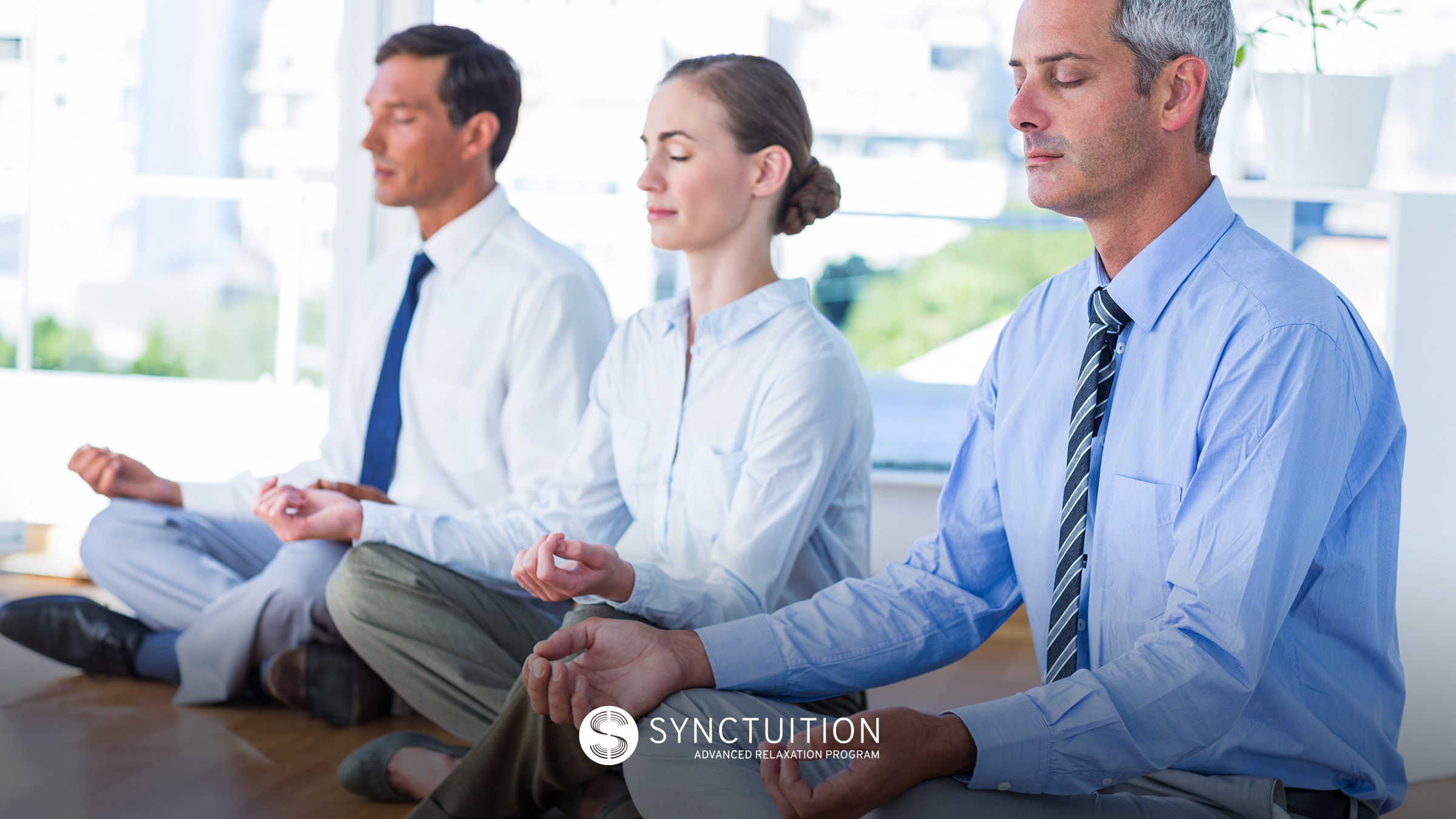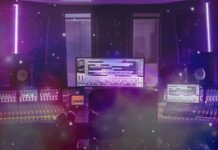Have you ever been completely immersed in a task, oblivious to the rest of the world? You were so involved in this particular activity that time simply flew by. Your energy is at 100% and you are enjoying every single minute of it. Maybe, you’ve been doing something you love and are really good at. It doesn’t happen often, but when it does, it’s completely rewarding and it produces incredible results. This is known as flow. What if you could harness the power of flow states to keep your productivity up and achieve your career goals? This is how you can do it.
Musicians call it being “in the groove”. Sportspeople talk about being in the zone. Some others named it “runner’s high”. Many know it as being in flow. Flow states are nothing new. Psychologist Mihaly Csikszentmihalyi came up with the concept back in the ’60s. Watching an artist in action, Csikszentmihalyi became intrigued by their single-minded, unique focus, and persistence to continue with the painting in spite of any discomfort, tiredness, or even hunger. On finishing the painting, however, the artist entirely ceased showing any interest in the completed work. The spell was broken.
Csikszentmihalyi then continued with his research into other fields, looking at the same phenomenon in chess players, dancers, surgeons, farmers, etc. Everyone he spoke to, regardless of gender, age, or culture, believed they performed best when experiencing the state Csikszentmihalyi named “flow”. In his own words, flow is a state of being:
“Completely involved in an activity for its own sake. The ego falls away. Time flies. Every action, movement, and thought follows inevitably from the previous one, like playing jazz. Your whole being is involved, and you’re using your skills to the utmost.”
Flow is, perhaps, one of the most enjoyable states of our existence. During flow, your attention is completely in the present moment, helping you boost your creativity and productivity. What’s more, flow states can be an essential part of living a true and meaningful life. Just think about it: a life in which you can harness your skills and strengths for something larger, rather than mundane and unimportant things that lead to burnout and dissatisfaction.
Are Flow States Supported by Science?
The concept of flow states seems too good to be true. So, now the question is: does science support flow? The short answer is yes. According to neuroscience, flow states emerge from a radical alteration in brain function. As your attention heightens, your subconscious processing replaces your slower and less efficient conscious processing. In the words of neuroscientist Arne Dietrich, “we’re trading energy usually used for higher cognitive functions for heightened attention and awareness”. This is called transient hypofrontality.
In 2008, neuroscientist Charles Limb used fMRI (functional magnetic resonance imaging) to examine the brains of improv jazz musicians whilst in flow states. Limb found that the dorsolateral prefrontal cortex (an area of the brain related to self-monitoring) was deactivated. Self-monitoring is our inner critic: everything that makes us doubt ourselves. When this area goes quiet, it is possible to act without any fear or hesitation. That’s why creativity becomes fee-flowing, risk-taking is no longer scary, and you are able to give your best performance.
And this is not all. Changes in brainwave activity enhance this process. During flow, the brain shifts from beta waves (fast-moving states of consciousness) to the slower frequencies of alpha and theta. Alpha waves are associated with daydreaming — when we jump from one idea to the next without much resistance. Meanwhile, theta waves show up during REM or just before we fall asleep. It is then that ideas combine in radical ways. Naturally, both effects further decision-making much more.
Related: Boost Your Brainwave Activity With Binaural Beats Meditation
The Importance of Flow in the Workplace
“Choose a job you love, and you will never have to work a day in your life,” said Confucius. It’s an excellent proverb, but the reality of the 21st century is more complicated than that. Even if you are doing something you love and are good at, distractions can jeopardize your productivity. If you are dealing with constant emails, phone calls, overlapping projects, and last-minute meetings each day, you’d likely feel burnout and stressed at some point.
While flow states may not be the answer to all your problems, they can make a huge difference in your career. If you’d spent your Monday morning in flow, you would get many more things done than usual. You wouldn’t feel like you are barely keeping up, but rather succeeding and being in control. In fact, a 10-year study conducted by McKinsey & Company found that top executives are 5 times more productive in flow states. According to that research, if everyone could increase their time in flow by 15 to 20%, workplace productivity would likely double.
High-performance expert Steven Kotler also links flow to faster learning. Citing a military study from DAPRA, Kotler discussed the findings that snipers who trained in a flow state reached an expert level in half the time. When it comes to work-life, this can nurture more efficient training and development. It can also limit the constant distractions that often block our creativity.
How to Enter a Flow State?
By now, you know that, when it comes to your career goals, flow states can make a positive difference. When you are in flow, you experience serenity, a distorted sense of time, a lack of awareness of your physical needs, deep focus, and total control over the situation and outcome, amongst other factors.
So, how can you experience all of that? What triggers flow states? There’s not a single answer. In fact, several factors can trigger flow. These can be psychological, environmental, social, or creative factors. In The Rise of Superman: Decoding the Science of Ultimate Human Performance, Steven Kotler identifies the following 17 triggers.
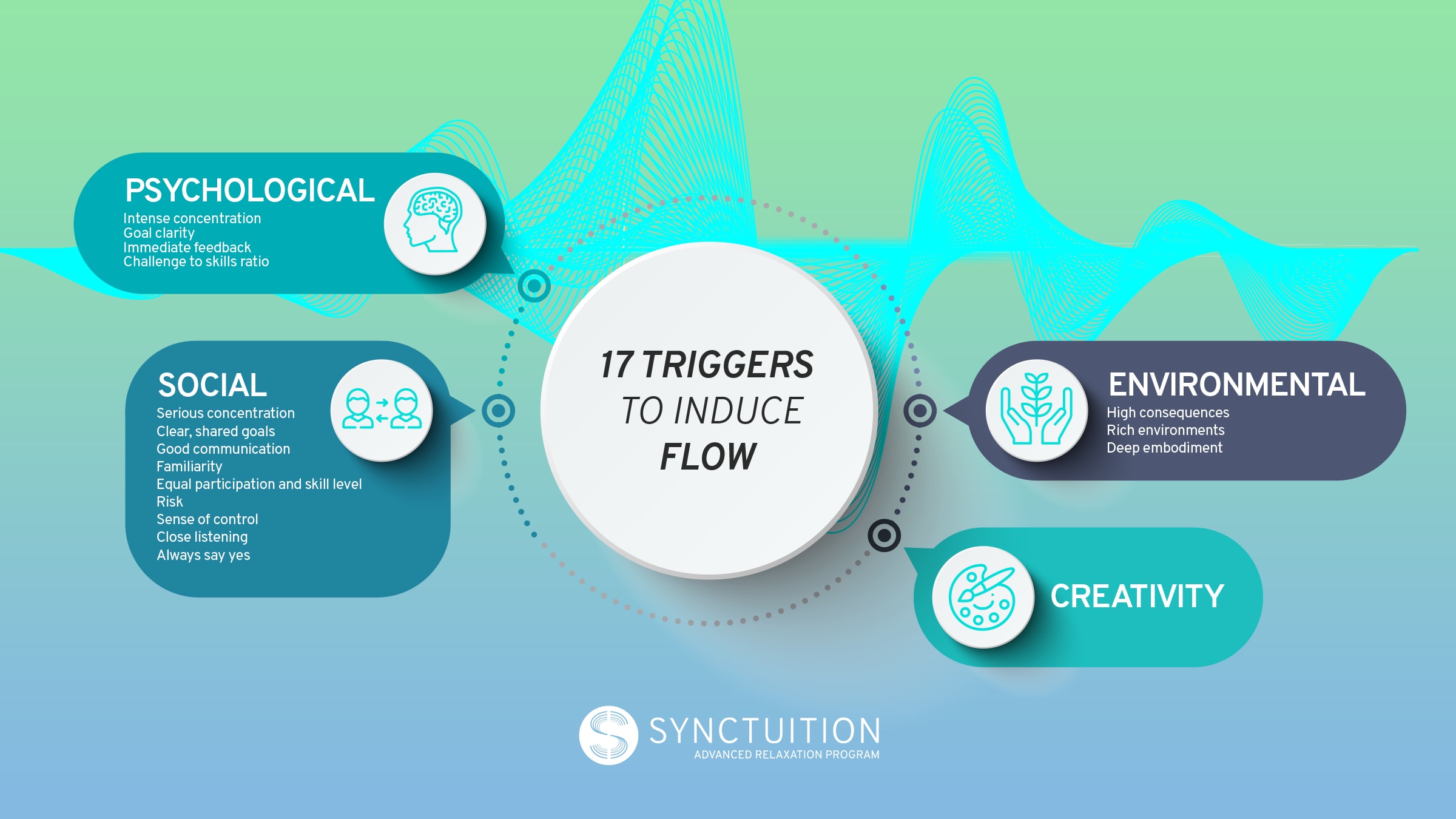
If you’d like a simplified version, here’s a practical guide to achieving a state of flow:
- Have a clear goal and plan of action
- Choose a task you are familiar with and enjoy
- Establish or identify a certain level of challenge
- Make sure to listen and communicate clearly with your team
- Identify or establish a reward
Mindfulness Meditation: An Effective Way to Achieve Flow
Mindfulness and meditation have a lot in common with flow states. Imagine you are doing a research presentation on the thing you love most in the world. You are focused and having fun, and soon, you forget about your worries or any future plans you may have. Everything else vanishes to give way to whatever is happening at the present moment.
This is exactly what happens when you are mindful. In simple terms, mindfulness is the act of being fully engaged in the present moment — free from any judgemental thoughts and/or emotions about the future and past. By engaging in mindfulness meditation, you encourage your mind to become aware of the now. You observe what makes you distracted — stress about your career, your relationships, your health, etc — and you understand they have no power over us.
Flow is a state of meditation or mindfulness that you experience while being completely and 100% absorbed in a determined activity. Since one of the key elements to achieving Flow is deep concentration, mindfulness meditation can train your mind to achieve it. This is how you can do it to achieve success at work or help your employees keep their productivity levels up.
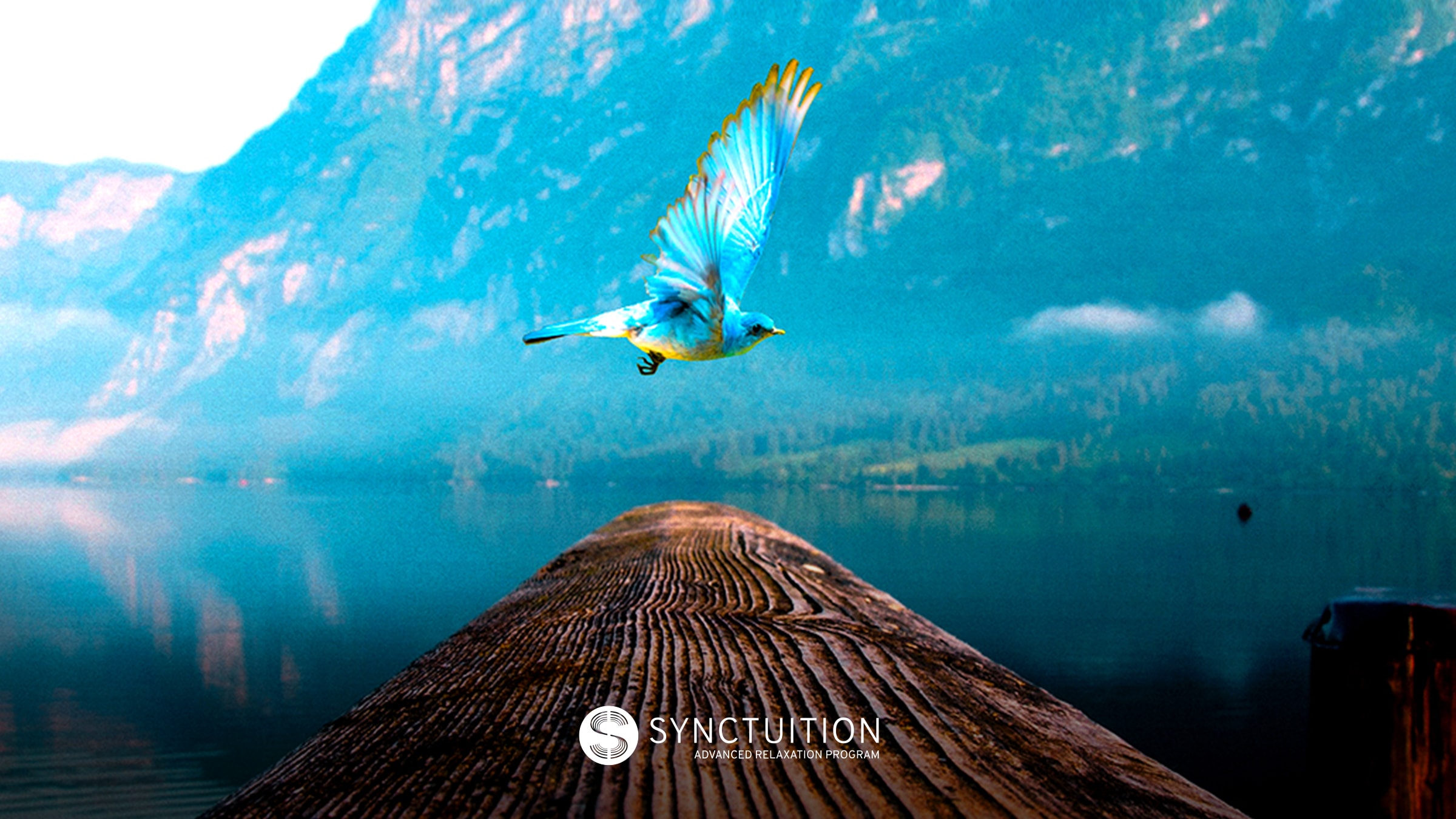
Become Mindful In A Matter of Minutes
If you are new to mindfulness meditation or any kind of meditation, this exercise will help you achieve the optimal state for flow in a matter of minutes.
Step 1: Find a comfortable position
It’s all about comfort. Find a chair, a nice corner of your living room, or a cushion. Keep your back straight. Rest your hand on your tights or wherever they feel most comfortable.
Step 2: Become aware and relax your body
Now that you are comfortable, it’s time to notice your body. Focus on its weight and shape. Notice the sensations you experience — the connection with the floor or the cushion, every small touch. Relax any areas where you feel tense or tight.
Step 3: Notice your breath
Redirect your attention to the natural flow of your brain. Don’t try to force it or change your breath’s rhythm. Simply notice where you feel your breath within your body. This may be your throat, chest, abdomen, or nostrils. Do this with each breath you take.
Step 4: Be patient and kind
Your thoughts may start wandering. Rather than beating yourself up, be kind and understanding to yourself. If you notice your mind wandering, simply say to yourself, “I’m thinking” and redirect your attention to your breathing.
Step 5: Go back to the beginning
After a few minutes, go back to step 2. Notice your whole body and let yourself relax.
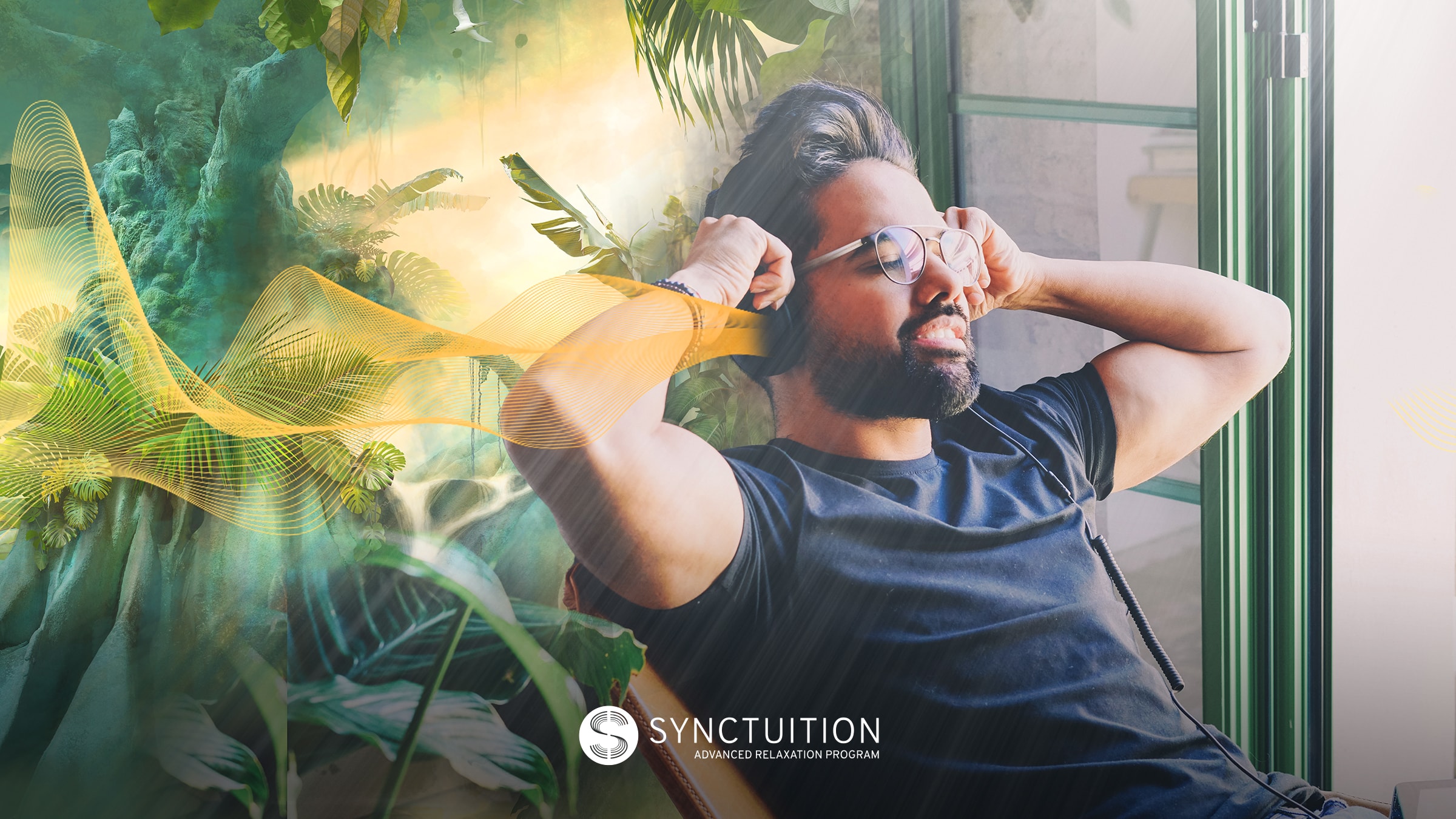
When Mindfulness Meets Technology
By now, you already know that intense focus is a fundamental part of triggering flow. Synctuition combines the best of mindfulness practices and three-dimensional sound technology to help you block unnecessary distractions and redirect your focus to the present. Yet, this is not all. What makes the program truly special is its incorporation of binaural beats in each audio journey.
Binaural beats are two sound waves — one in each ear — playing at different frequencies. To make up for the difference, the brain creates a third sound. In this sense, binaural beats are auditory illusions that can be measured in Hertz. Delta, theta, alpha, beta, and gamma are frequencies that provide different benefits for both the mind and body. As previously mentioned, alpha and theta states are the most ideal frequencies for triggering a flow state.
Typically, theta brainwaves (7Hz to 8Hz), are present during light sleep and deep meditation. Meanwhile, alpha waves (7.5-14Hz)are associated with relaxation, daydreaming, and light meditation. It is at the Alpha-Theta border, where the optimal state for flow begins. Synctuition goes beyond by also using the lesser-known Gamma brainwave frequency, ideal for synchronizing the brain and facilitating deeper relaxation.
Whether you wish to complete a personal project or would like to help your employees reach their peak performance, Synctuition’s sound journeys offer an entertaining and easy way to enter flow. All you need is a good set of stereo headphones and 25 minutes of your time. As you listen, your mind will enter a placid state similar to a lucid dream. The binaural beats will power this dream and prepare your mind for entering a state of flow that will help you unravel your full potential.


